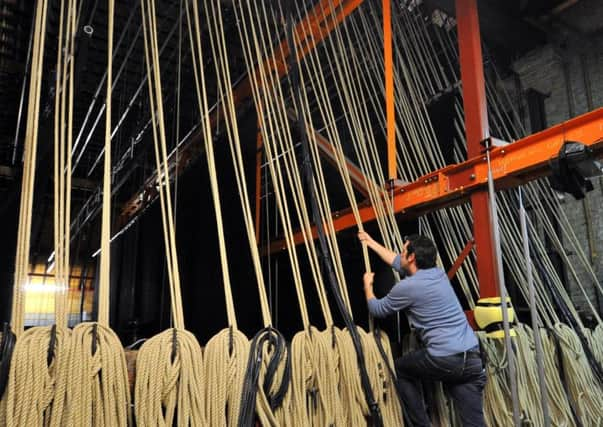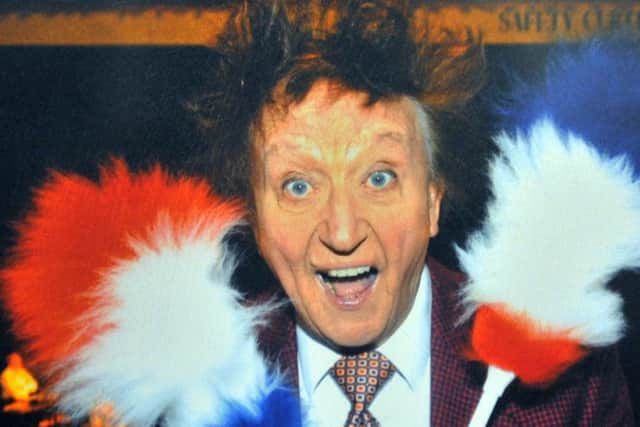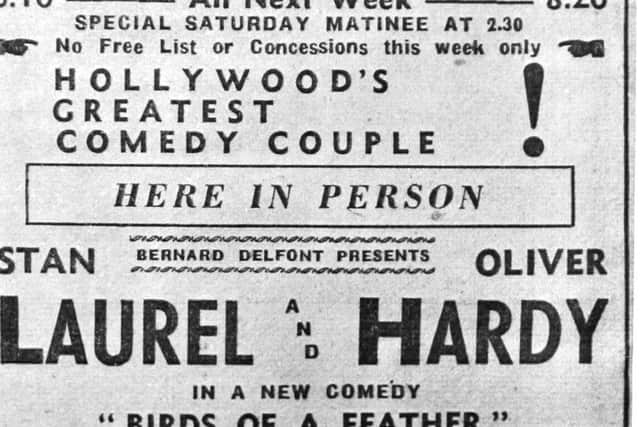Infinite variety of a grand night at the Opera House in York


Like many an old, atmospheric music hall and theatre, the Grand Opera House in York has its own ghost stories.
“Several staff have told stories where they’ve looked up at the end of a night to get their stuff to go home and thought they’d seen someone at the back of the dress circle, but when they came up nobody was there,” says Clare O’Connor, deputy general manager.
Advertisement
Hide AdAdvertisement
Hide AdThere are stories, too, of old coins dating back decades reportedly found underneath seats, which mysteriously appeared.


When a building dates back 150 years, though, it’s perhaps not surprising that a few spectral tales have filtered down through the decades.
Today, the Grand Opera House is a popular venue, but it was originally built not as a theatre but a corn exchange. The building was opened with a grand, celebratory dinner (courtesy of the White Swan Hotel) on October 28, 1868. An article published in the Yorkshire Gazette, three days later, describes the building as having a “very handsome” character.
“It is finished in an ornamental manner. The building is lighted up by means of three large gas sun-lights, which are suspended from the centre of the laminated ribs, and the effect produced is extremely pleasing and satisfactory…”
Advertisement
Hide AdAdvertisement
Hide AdIn its early days the building had a variety of uses. “In the 1870s the Presbyterian community held services here on a weekly basis and it was also sometimes used as a concert hall,” says general manager, Rachel Lane.


The winding corridors and irregular arrangement of rooms in the building hint at its less-than-theatrical origins, and while it may have been ‘pleasing’ on the eye the corn exchange wasn’t a success and in 1902 the buildings were converted by William Peacock into the Grand Opera House.
Its first performance as a theatre came in 1902 when Florrie Ford starred in Little Red Riding Hood. Later that year the first film was shown in York featuring Professor Herbert’s animated pictures displayed in his ‘Biograph Box’.
Over the years the venue has had something of a chequered, and intriguing, history. “It took three months to convert it into a theatre and since then it’s been a theatre, a bingo hall, a roller-skating ring, a wrestling arena and converted back to a theatre again,” says O’Connor.
Advertisement
Hide AdAdvertisement
Hide AdHowever, within 12 months it had already changed its name (not for the last time) to the Opera House and Empire Theatre.
This was because new regulations at the time banned smoking in ‘serious’ theatres but allowed it in music hall venues, and with smoking so popular at the time theatres wanted to pull in more punters.
During the First World War it was used to hold a series of so-called ‘educational lectures’, as well as newsreel films from the Front.
Like many theatres, the Opera House suffered from the introduction and increase in taxes – like the 1916 ‘Amusement’ [entertainment] tax which was seen as a threat to many venues.
Advertisement
Hide AdAdvertisement
Hide AdNevertheless, it continued and remained in the hands of the Peacock family until 1945. During this period its varied programme of shows and events featured everything from plays and amateur opera, to pantomimes and silent films, with the likes of Charlie and Sydney Chaplin, Gracie Fields and Lillie Langtry all gracing its stage.
The theatre was taken over by an FJ Butterworth who ran it for 11 years after the Second World War. During this time such luminaries as Vera Lynn, Laurel and Hardy and a new comedy duo going by the name of Morecambe and Wise appeared there.
Despite attracting such legendary names the theatre has suffered lean times. It closed in 1956 for two years before re-opening after being bought by Ernest Shepherd who owned a business on The Shambles.
The stage was removed and the stalls floor were levelled fro roller-skating, wrestling and bingo as it entered a new era. It remained like this until 1985 before changing hands once again and undergoing a £4m restoration.
Advertisement
Hide AdAdvertisement
Hide AdThere has been long been a rivalry between the Opera House, or Empire as it was also called over the years, and the Theatre Royal.
“There’s some interesting stories about how it sat within the culture of York and the idea of the Theatre Royal versus the Empire and how the audiences differed between the two,” says Lane. “The audiences here tended to be more working class as this was more mainstream and more of a variety hall.”
The diversity in terms of its programme continues to this day, as O’Connor points out. “There’s still the idea that if you want to watch a drama or a play you go to the Theatre Royal and if you want to see a musical then you come to the Opera House.”
The venue continues to pull in big names with Adele, Beverley Knight, Bryan Adams, Lee Evans and David Frost among those who have appeared at the Grand Opera House in more recent years.
Advertisement
Hide AdAdvertisement
Hide Ad“We’ve had several of the former Monty Python stars like John Cleese and Michael Palin and we still have that Variety feel so we get a lot of big music acts.
“We’re getting more comedians coming here, too, because they like the more intimate feel of the venue because you’re so close to the audience,” says technical manager Mark Waters.
The venue continues to prove popular. “There’s not many times when there isn’t something on here, we’re generally very busy”, says Waters. “We’ll do a night of comedy and then one night of ballet and very occasionally we’ll host some opera, so we are that Variety venue.”
They’ve just had Ross Noble doing a stand-up show and the folk musician Richard Thompson, and O’Connor believes there’s still a big appetite for live performance whether it’s a night out watching comedy, music or theatre. “Everyone still wants that sort of thing. People will come out as long as you give them something they want to watch and that’s what we try and do.”
Advertisement
Hide AdAdvertisement
Hide AdWaters agrees. “One of the reasons for these anniversary celebrations is the fact it has survived and has provided entertainment for the people of York for so long,” he says.
“We chat to customers and they tell us stories about how long they’ve been coming here and we learn things about the history of the place from them. They can tell us about when it was a bingo hall and what it was like when they were younger.”
And, as Lane points out, the venue continues to play an important role in the city. “I think we complement the cultural ecology of the city if you line us up against the Theatre Royal and the Barbican being part of that trio of bigger venues, and as part of our anniversary we’d love to hear from people about their memories and any stories they might have.”
The Grand Opera House York has had its current name, which is an amalgamation of previous ones, since 1989 and it could be in for another change of name in the future.
Advertisement
Hide AdAdvertisement
Hide AdIt remains to be seen whether or not this happens, and there will no doubt be some people against the idea. But on the other hand it has survived plenty of name changes over the last century-and-a-half and it’s still here – and that is certainly something worth celebrating.
As part of its 150th anniversary celebrations, the Grand Opera House York is keen to hear from people about their stories and memories of the theatre. Email [email protected]